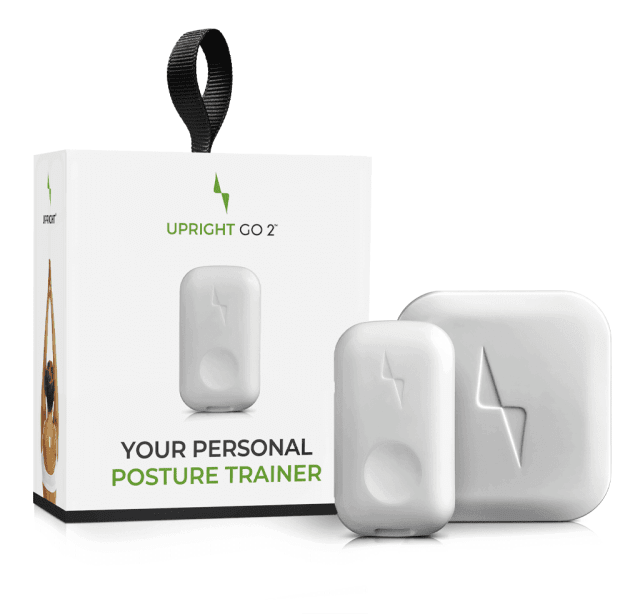5 Most Common Back Pain Myths Debunked
Max Frenkel

Thirty-one million Americans suffer from back pain, and that means there are millions of pseudo experts. Unfortunately, listening to every “specialist” on the Internet can cause more problems than it solves. The problem is that back pain misconceptions can quickly get out of hand and become accepted beliefs.
To help protect you from the fear mongering and confusion, we’re debunking the five greatest back pain myths: moving makes it worse, exercise should be avoided, scans reveal all, back pain happens without warning, and pain equals damage. Back pain is the leading cause of disability worldwide, and that means you need to be armed with the facts if you want to move on with your life.
Myth 1: “Moving will make my back pain far worse!”
Wrong! Movement is not the enemy of back pain. In fact, in many instances, bed rest and a fear of twisting, bending, and moving can actually make your back pain worse. It’s understandable. When movement causes pain, why would you want to move anymore? But lying down can work against you and even slow your healing.
The Annals of Internal Medicine published a study that reviewed 134 workers with back pain. The researchers found that those who kept moving recovered in just 58 days compared to the 87 days of recovery it took for sedentary individuals.
Myth 2: “I shouldn’t exercise, and I definitely shouldn’t weight train!”
If bed rest isn’t the best option, neither is exercise avoidance. Yes, you should reduce your normal activities, but that doesn’t mean you should stop hitting the gym. In fact, you should try and stay as active as possible.
Of course, that doesn’t mean you should start doing 100lb squats immediately. Instead, you should focus on exercising in a controlled, gradual, and progressive manner. According to the Mayo Clinic, just 15 minutes of exercise a day can help stretch and strengthen your back and supporting muscles to prevent further pain and promote recovery.
Myth 3: “A scan will reveal all of my back problems!”
In some cases, technology doesn’t hold all the answers. While a back scan can often reveal what’s going on, it’s not always that simple. Back pain is often a complex and multi-factorial issue, meaning that a spinal diagnosis isn’t straightforward.
To uncover what’s causing your back pain and what’s necessary for recovery requires a full clinical diagnostic process. This typically requires three steps:
- A review of your medical history. To get to the root of your back pain, your physician should spend time asking you a series of questions about your symptoms, history, activities, positions, treatments, and more.
- A physical examination. A competent physician should test for nerve function, muscle strength, pain in certain positions, and more.
- Diagnostic testing. Only after a physician has reviewed your medical history and given you a physical examination is a scan appropriate. Everything from an X-ray to CT scans and MRI scans can be appropriate to assess certain conditions.
Myth 4: “My back pain had no warning!”
Yes, it’s true that your back can suddenly “go out,” but it never happens out of the blue. The truth is that your back pain always has a cause whether it’s poor conditioning, weight gain, incorrect posture, or bad lifting mechanics.
The reality for many individuals is that back pain is a result of a cumulative effect from simple movements. Sudden back pain can also be a sign of an underlying degenerative process or neurological issues. There’s always a cause for back pain and seeing a physician is your best chance for appropriate diagnosis and recovery.
Myth 5: “If my back hurts that means that there’s damage to my spine!”
Back pain doesn’t always equal injury. While, in the past, that’s been the established view, recent research has revealed that back pain can, and often is, a holistic issue.
There are many physical, psychological, and even social factors that can lead to back pain. In fact, according to the National Institute of Neurological Disorders and Stroke anxiety and depression can even influence back pain. The only way to diagnose the cause of your back pain and to determine if your spine suffers from damage is to visit your health care provider.
Now What?
Now that you know the truth about back pain, the next step is to do something to relieve your back pain and get immediate results. That’s where Upright can help. In just 15 minutes a day, you can train your body to have better posture for decreased back pain and increased productivity.
References;
National Institute of Neurological Disorders and Stroke; http://www.ninds.nih.gov/disorders/backpain/detail_backpain.htm
Mayo Clinic; http://www.mayoclinic.org/healthy-lifestyle/adult-health/multimedia/back-pain/sls-20076265
Annals of Internal Medicine; https://www.ncbi.nlm.nih.gov/pubmed/14734329
American Chiropractic Associations; http://www.acatoday.org/Patients/Health-Wellness-Information/Back-Pain-Facts-and-Statistics
Source: Old Shopify Blog
You Might also Like
Search
Sign up to our newsletter
Follow Us On
Popular
Revisit the GO 2/S Device Setup
How to get started
Finding your upright position
How to find your target upright posture
Calibration
Check out the UPRIGHT GO 2

